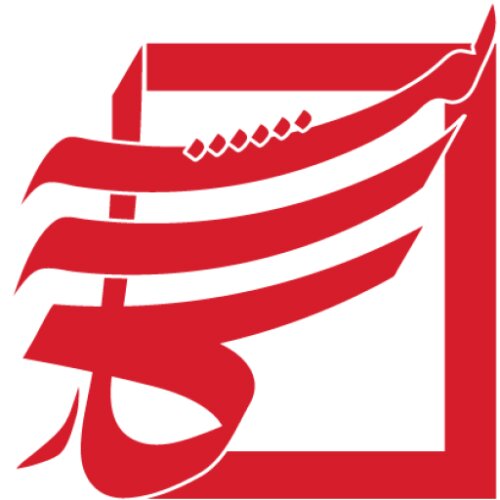Best Art & Cultural Property Law Lawyers in Iran
Share your needs with us, get contacted by law firms.
Free. Takes 2 min.
Or refine your search by selecting a city:
List of the best lawyers in Iran
About Art & Cultural Property Law in Iran
Art & Cultural Property Law in Iran is a specialized field that addresses issues concerning the creation, distribution, and preservation of art and cultural artifacts. This area of law is of paramount importance due to Iran's rich historical heritage and diverse cultural landscape. It covers aspects such as the protection of heritage sites, regulation of art trade, and ownership rights over cultural properties. Due to its intricate relationship with national identity and international treaties, it requires careful navigation of both domestic statutes and international conventions.
Why You May Need a Lawyer
There are several scenarios where legal assistance may be necessary in the realm of Art & Cultural Property Law in Iran:
- Ownership Disputes: Conflicts can arise over the ownership and provenance of artworks, particularly when families or nations claim rights to specific pieces.
- Import and Export Regulations: Understanding the legal framework governing the movement of cultural artifacts across borders is essential, especially given Iran’s strict regulations.
- Forgery and Fraud: The art market is susceptible to fraud, requiring expert legal assistance for verification and dispute resolution.
- Intellectual Property: Artists may need legal protection for copyrights and moral rights over their creations.
- Heritage Site Protection: Legal intervention may be necessary to preserve sites of historical and cultural significance from threats posed by development or conflict.
Local Laws Overview
Iran's cultural heritage laws are crafted to protect its rich historical sites and artifacts. Key legislation includes:
- Regulations on Export: Strict controls exist to prevent the unauthorized export of cultural artifacts, with severe penalties for non-compliance.
- National Heritage Registration: Sites of historical significance are registered and protected under national laws, prohibiting unauthorized alterations or demolitions.
- International Treaties: Iran is a signatory to various international conventions, such as the UNESCO Convention on the Means of Prohibiting and Preventing the Illicit Import, Export and Transfer of Ownership of Cultural Property.
- Modern Art Regulation: Contemporary art is subject to intellectual property laws that protect artists’ rights and ensure fair trade practices.
Frequently Asked Questions
What constitutes cultural property in Iran?
Cultural property includes a wide array of items such as artworks, artifacts, manuscripts, and monuments of historical, artistic, or archeological significance.
How are cultural properties protected in Iran?
They are protected under national laws that regulate excavation, export, and sale. Unauthorized actions regarding such properties often result in significant fines and penalties.
Can I export an ancient artifact from Iran?
Generally, the export of cultural artifacts without appropriate permits is prohibited to prevent heritage loss. Specific permissions may be required in exceptional circumstances.
What steps are involved in registering a heritage site?
The process involves a formal application to national bodies responsible for cultural heritage, supported by documentation proving the historical significance of the site.
What legal actions are taken against art forgeries?
Forgery is a criminal offense that can result in severe penalties including imprisonment and fines, along with civil liabilities for damages.
What are my rights if my artwork is copied without permission?
Artists have the right to protect their work under intellectual property laws, which can provide remedies such as compensation for unauthorized use.
How can I prove ownership of an art piece?
Ownership can be established through documentation such as purchase receipts, provenance records, and registered ownership titles.
What is the role of UNESCO in protecting Iran’s cultural heritage?
UNESCO aids in the protection and conservation of Iran’s heritage under international agreements, providing guidance and support for compliance with global standards.
How do I report damage to a historic site?
Concerns should be reported to the appropriate governmental bodies responsible for cultural heritage preservation, who can then take appropriate legal action.
Can contemporary art be classified as cultural property?
Yes, contemporary art can be classified as cultural property if it holds cultural, historical, or artistic significance.
Additional Resources
Several resources and organizations can assist individuals seeking legal guidance in Art & Cultural Property Law in Iran:
- Cultural Heritage, Handicrafts and Tourism Organization of Iran: Oversees heritage sites and artifact regulations.
- Iranian National Commission for UNESCO: Provides guidance on compliance with international heritage conventions.
- Local Museums and Cultural Institutions: These bodies often have legal departments that can offer specific advice.
- Legal Firms Specializing in Art Law: Firms with expertise in cultural property law provide expert legal counsel and representation.
Next Steps
If you find yourself in need of legal assistance regarding Art & Cultural Property Law, consider the following steps:
- Identify and document the specifics of your legal issue, including any relevant documentation.
- Reach out to a lawyer who specializes in Art & Cultural Property Law to discuss your case and explore your legal options.
- Consult with governmental or organizational bodies that may provide guidance specific to your situation.
- Stay informed about local laws and international treaties that might affect your case.
- Engage with communities or forums focused on art and cultural heritage to gain insights from similar experiences.
Lawzana helps you find the best lawyers and law firms in Iran through a curated and pre-screened list of qualified legal professionals. Our platform offers rankings and detailed profiles of attorneys and law firms, allowing you to compare based on practice areas, including Art & Cultural Property Law, experience, and client feedback.
Each profile includes a description of the firm's areas of practice, client reviews, team members and partners, year of establishment, spoken languages, office locations, contact information, social media presence, and any published articles or resources. Most firms on our platform speak English and are experienced in both local and international legal matters.
Get a quote from top-rated law firms in Iran — quickly, securely, and without unnecessary hassle.
Disclaimer:
The information provided on this page is for general informational purposes only and does not constitute legal advice. While we strive to ensure the accuracy and relevance of the content, legal information may change over time, and interpretations of the law can vary. You should always consult with a qualified legal professional for advice specific to your situation.
We disclaim all liability for actions taken or not taken based on the content of this page. If you believe any information is incorrect or outdated, please contact us, and we will review and update it where appropriate.
Browse art & cultural property law law firms by city in Iran
Refine your search by selecting a city.















